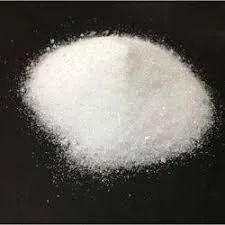Understanding Adhesion and Additives A Key to Enhanced Material Performance
Adhesion is a fundamental property in materials science, playing a crucial role in the effectiveness and durability of various products. It refers to the ability of different surfaces to bond together, often influenced by the molecular interactions between them. This property is pivotal in numerous applications, from construction materials to coatings and biomedical devices. In many cases, achieving optimal adhesion is not an inherent characteristic of the materials themselves; rather, it can be significantly enhanced through the use of additives.
Additives are substances added to materials to improve their performance properties. In the context of adhesion, these additives can enhance the bond strength between substrates, improve surface wettability, and modify the surface chemistry to promote better interaction between different materials. The selection of appropriate additives is essential to tailor the adhesion properties based on specific applications and performance requirements.
One common type of additive used to improve adhesion is adhesion promoters. These chemical agents typically function by altering the surface energy of the substrate, making it more receptive to bonding. For example, silane coupling agents are frequently employed in polymer composites to promote adhesion between inorganic fillers and organic matrices. They work by forming covalent bonds with both the surface of the filler material and the polymer, enhancing interfacial adhesion significantly.
In the realm of coatings, various additives are utilized to enhance adhesion to substrates. For instance, certain epoxy formulations include phenolic or carboxylic acid groups that can promote adhesion to metal surfaces. By creating a chemical bond at the interface, these additives help ensure that the coating adheres firmly, resisting delamination and environmental degradation over time.
adhesion additive

Another group of additives are surfactants, which lower the surface tension of a liquid and improve its ability to spread over a surface. In the context of adhesive applications, surfactants can enhance the wetting properties of adhesives, allowing them to flow into smaller gaps between surfaces, thereby increasing contact area and promoting stronger bonds. This is particularly important in applications involving porous materials or rough surfaces where traditional adhesives may fail to provide adequate coverage.
Furthermore, the role of nanoparticles in improving adhesion has garnered significant interest. Nanomaterials such as silica or clay can be incorporated into adhesive formulations, resulting in enhanced mechanical properties and improved adhesion. These nanoparticles increase the surface area available for interaction while also modifying the physical properties of the adhesive, resulting in a more robust and durable bond under various loading conditions.
While the use of adhesion additives can vastly improve performance, it is essential to conduct thorough testing to ensure compatibility and effectiveness. Factors such as temperature, humidity, and exposure to chemicals can all influence adhesion properties. Therefore, it is critical to evaluate how different additives perform under real-world conditions to predict long-term behavior adequately.
In addition, the environmental impact of additives should not be overlooked. As the industry moves towards more sustainable practices, there is a growing demand for eco-friendly additives that do not compromise adhesion performance. Research is ongoing into biobased adhesion promoters and sustainable formulations that meet both environmental and performance criteria.
In summary, the interaction between adhesion and additives is a complex yet essential aspect of material science. The right selection of additives can significantly enhance adhesion, leading to improved performance and longevity in various applications. From adhesion promoters to surfactants and nanoparticles, a diverse range of options is available for engineers and formulators looking to optimize their products. As technology progresses and the demand for sustainable solutions grows, the development of innovative additives will continue to be a key area of research, with the potential to revolutionize the industry. The future of adhesion technology promises not only better-performing materials but also solutions that align with ecological values, driving further advancement in this vital field.
-
The Application and Significance of Construction RdpNewsMay.19,2025
-
Industrial Grade HpmcNewsMay.19,2025
-
Building Coating Adhesive Building Coating Adhesive HpmcNewsMay.19,2025
-
Application Of Hpmc For Detergent For Detergent In DetergentsNewsMay.19,2025
-
Application Of Hpmc Cellulose In Cement-Based MaterialsNewsMay.19,2025
-
Application Of High Quality Hpmc For Construction In The Field Of ConstructionNewsMay.19,2025




